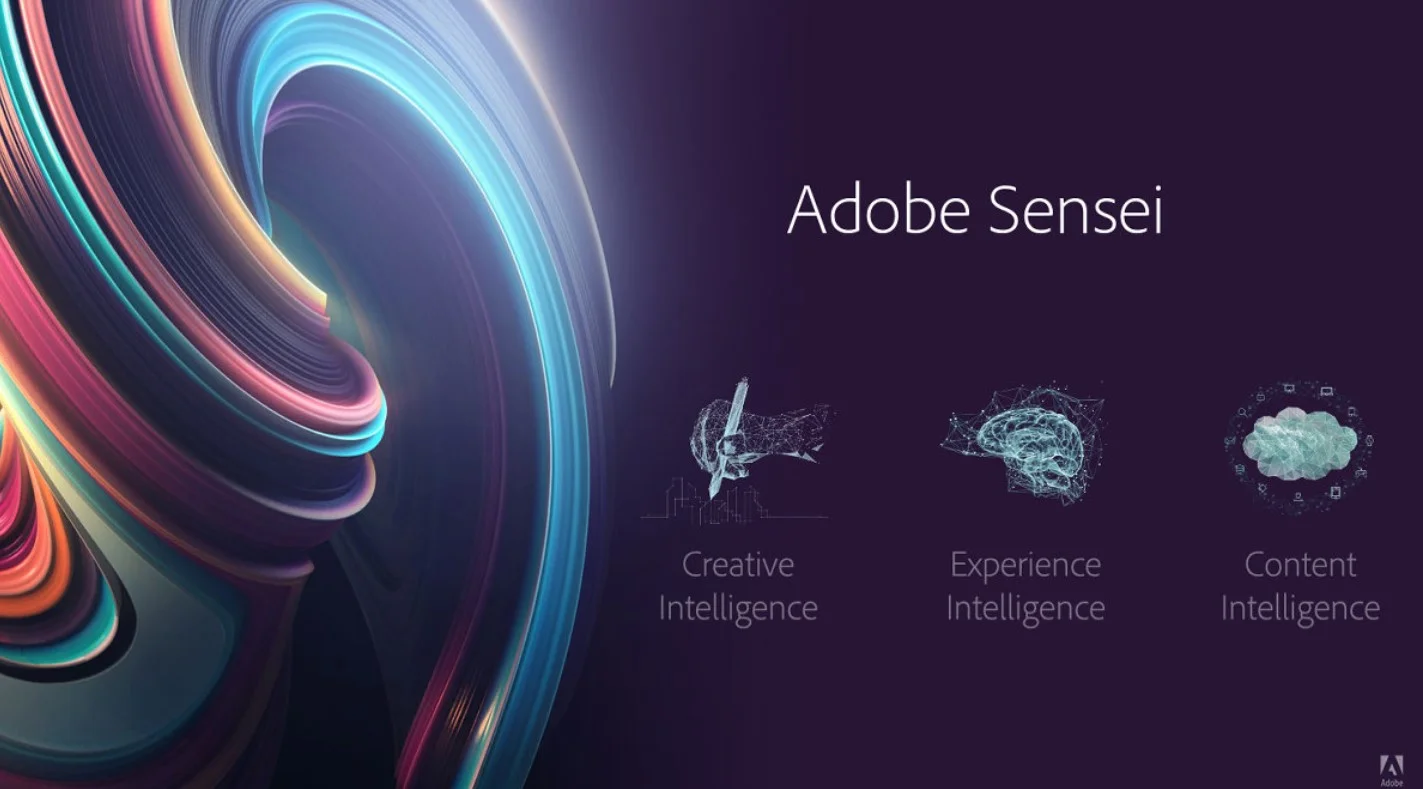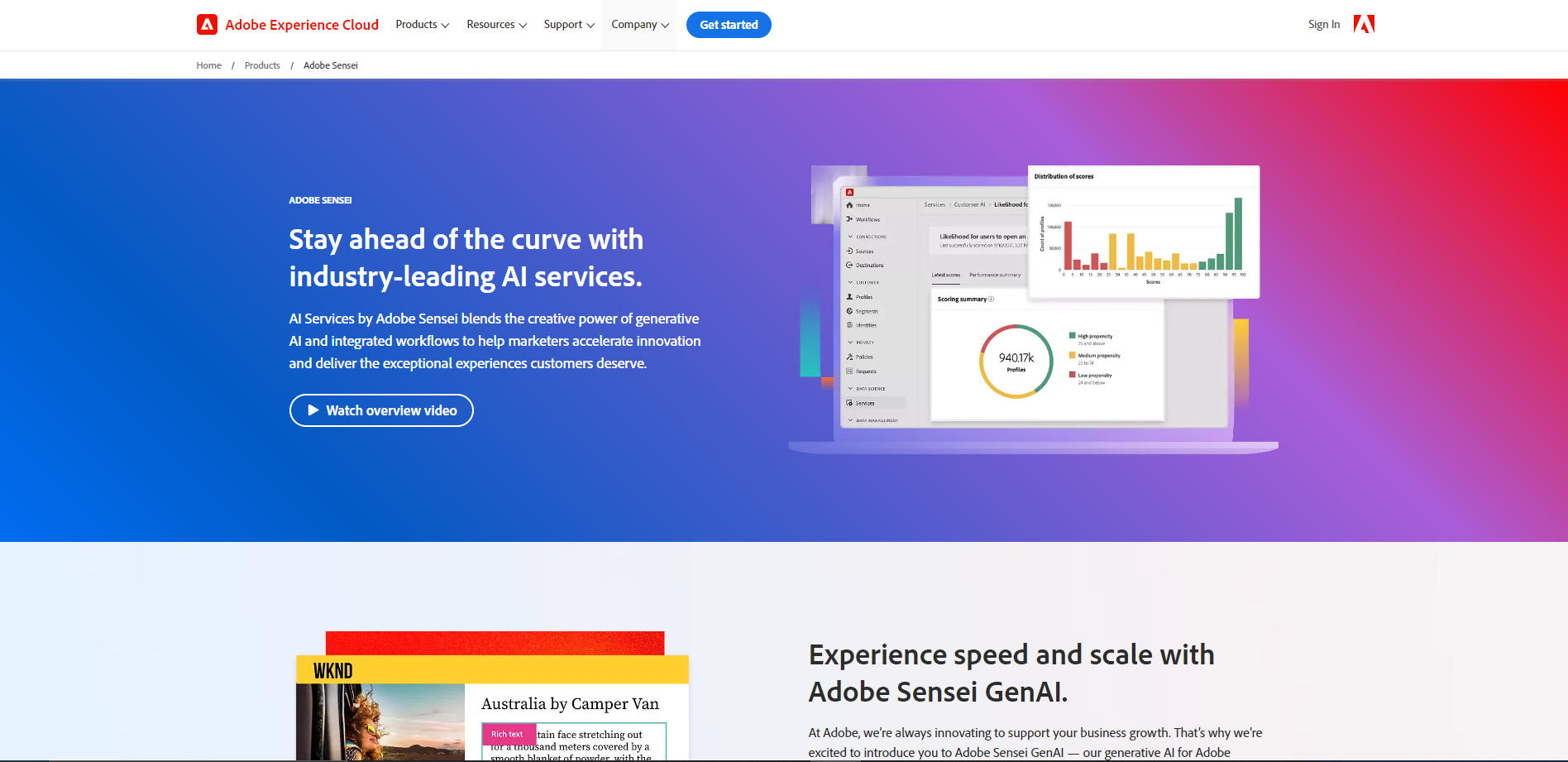
Adobe Analytics with Adobe Sensei: Complete Buyer's Guide
Enterprise behavioral analytics platform delivering real-time AI-driven customer insights and predictive personalization through integrated Adobe ecosystem capabilities.
Adobe Analytics with Adobe Sensei represents Adobe's enterprise-grade behavioral analytics platform that combines traditional web analytics with predictive AI capabilities through its integrated Sensei machine learning engine. The solution targets enterprise marketing organizations seeking to move beyond descriptive reporting toward predictive customer insights and automated campaign optimization within Adobe's comprehensive Experience Cloud ecosystem[53][59].
Market Position & Maturity
Market Standing
Adobe Analytics with Adobe Sensei holds a strong enterprise market position within the behavioral analytics landscape, competing against specialized players like Mixpanel and Amplitude while differentiating through comprehensive ecosystem integration capabilities[53][57].
Company Maturity
Adobe's established enterprise relationships and extensive Experience Cloud ecosystem provide market stability and long-term viability assurance for enterprise buyers.
Growth Trajectory
Adobe's behavioral analytics solution operates within a rapidly expanding market with projections indicating growth from $4.13 billion in 2024 to $28.98 billion by 2035, reflecting a 26.5% CAGR[7].
Industry Recognition
Adobe competes effectively against specialized vendors through integrated ecosystem advantages and comprehensive customer experience management capabilities within a single platform[53].
Strategic Partnerships
Native integration with Adobe Target and Journey Optimizer provides unique competitive positioning[53][57].
Longevity Assessment
Adobe's established enterprise presence, comprehensive ecosystem integration, and continued innovation investment provide strong indicators of long-term viability and market leadership sustainability within the enterprise behavioral analytics segment.
Proof of Capabilities
Customer Evidence
Documented customer implementations across diverse industries including automotive (Audi) and food service (Jollibee)[41][58].
Quantified Outcomes
AI-driven personalization delivers 28% higher conversion rates versus rule-based segmentation approaches[17]. AI systems process behavioral data 5x faster than manual analysis methods[17][19].
Case Study Analysis
Audi achieved improved conversions through Sensei-driven personalization capabilities[58]. Jollibee reduced customer insight latency using Sensei's omnichannel analytics capabilities[41].
Market Validation
Customer implementations align with broader market evidence showing AI-driven personalization delivers 28% higher conversion rates versus rule-based segmentation approaches[17].
Competitive Wins
Adobe's customer outcomes occur within a competitive landscape where specialized vendors like Mixpanel demonstrate 67% player churn reduction in gaming applications[17].
Reference Customers
Large enterprise customers with documented implementations across diverse industries including automotive (Audi) and food service (Jollibee)[41][58].
AI Technology
Adobe Sensei employs regression models for propensity modeling including churn risk and customer lifetime value prediction[54][59]. The system's algorithmic attribution allocates conversion credit across multiple touchpoints, moving beyond traditional last-click approaches to weight touchpoints by predictive influence on conversion outcomes[52][59].
Architecture
The platform processes cross-channel behavior data from web, mobile, and CRM sources to identify significant pattern changes through automated statistical deviation detection in real-time[52][54].
Primary Competitors
Specialized players like Mixpanel and Amplitude in behavioral analytics[53][57].
Competitive Advantages
Cross-cloud synergy through native integration with Adobe Target and Journey Optimizer[53]. Real-time clustering capabilities dynamically segment users during sessions[52][59].
Market Positioning
Adobe targets enterprise organizations requiring comprehensive behavioral analytics with predictive capabilities, while competitors like Mixpanel and Amplitude serve organizations seeking specific functionality with faster deployment[57].
Win/Loss Scenarios
Adobe wins when organizations require comprehensive behavioral analytics within integrated Adobe ecosystems and possess dedicated data engineering resources for complex implementations.
Key Features

Pros & Cons
Use Cases
Integrations
Pricing
Featured In Articles
Comprehensive analysis of AI Behavioral Analytics for AI Marketing & Advertising for AI Marketing & Advertising professionals. Expert evaluation of features, pricing, and implementation.
How We Researched This Guide
About This Guide: This comprehensive analysis is based on extensive competitive intelligence and real-world implementation data from leading AI vendors. StayModern updates this guide quarterly to reflect market developments and vendor performance changes.
59+ verified sources per analysis including official documentation, customer reviews, analyst reports, and industry publications.
- • Vendor documentation & whitepapers
- • Customer testimonials & case studies
- • Third-party analyst assessments
- • Industry benchmarking reports
Standardized assessment framework across 8 key dimensions for objective comparison.
- • Technology capabilities & architecture
- • Market position & customer evidence
- • Implementation experience & support
- • Pricing value & competitive position
Research is refreshed every 90 days to capture market changes and new vendor capabilities.
- • New product releases & features
- • Market positioning changes
- • Customer feedback integration
- • Competitive landscape shifts
Every claim is source-linked with direct citations to original materials for verification.
- • Clickable citation links
- • Original source attribution
- • Date stamps for currency
- • Quality score validation
Analysis follows systematic research protocols with consistent evaluation frameworks.
- • Standardized assessment criteria
- • Multi-source verification process
- • Consistent evaluation methodology
- • Quality assurance protocols
Buyer-focused analysis with transparent methodology and factual accuracy commitment.
- • Objective comparative analysis
- • Transparent research methodology
- • Factual accuracy commitment
- • Continuous quality improvement
Quality Commitment: If you find any inaccuracies in our analysis on this page, please contact us at research@staymodern.ai. We're committed to maintaining the highest standards of research integrity and will investigate and correct any issues promptly.